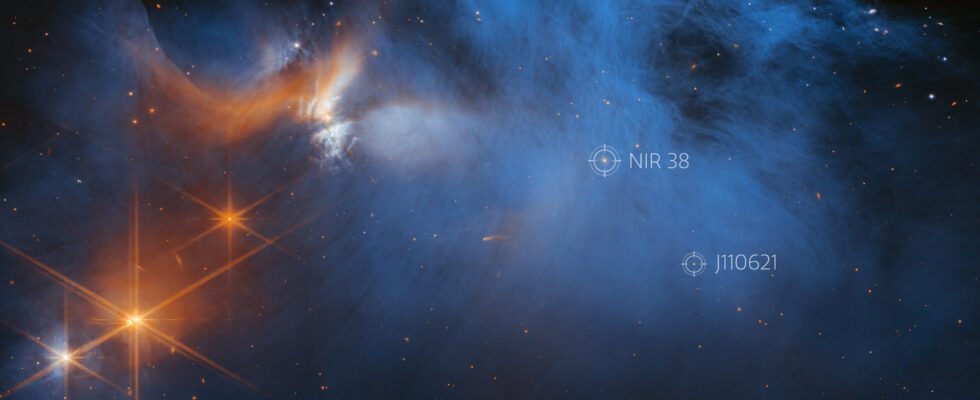By measuring the composition of interstellar ice in the darkest and coldest regions of a large molecular cloud, the JWST has detected all the building blocks necessary for the formation of water and complex molecules such as sugars, alcohols and amino acids. A “good breeding ground”, in short!
The study involved two CNRS laboratories, the PIIM (Physical Laboratory of Ionic and Molecular Interactions) and the ISMO (Orsay Institute of Molecular Sciences).
And the picture is pretty
The extraordinary scientific harvest of the James Webb Telescope continues. This time, he pointed his mirrors at Chameleon I, a region 600 light-years from Earth where dozens of stars are currently forming. This molecular cloud has spaces with hot gases and others much colder. It is on a dense, cold and little luminous zone that the observations could take place.
At temperatures close to absolute zero (measurements show an impressive -263°C, 10K), we find frozen particles and dust containing a whole very interesting atomic and molecular range! Why ? Already because this dust will be heated when new disks with protostars and their systems are formed by accretion. It is therefore a question of reading the “prehistory” of stellar systems by directly observing the bricks of which they will be made.
The Chameleon, it is complex
There is water ice (H2O), but also many other molecules such as CO and CO2, carbonyl sulphide, but also, and for the first time, methanol, an organic molecule considered to be complex. It also assumes the presence of ethanol, although it could not be proven. These “probiotic building blocks” can then lead to other molecules such as sugars, alcohols and simple amino acids. They could therefore be much more widespread than expected in stellar systems other than ours, and above all, from the outset, even before the formation of their stars.
Are we all stardust? In ice cream?
However, the measured amounts of carbon, hydrogen, oxygen, nitrogen and sulfur are lower than expected, given the estimated density of the Chameleon I molecular cloud. For the research team, it is related to the observational capabilities of the JWST, which was able to make these unique observations by observing starlight behind the cloud, absorbed by the small frozen agglomerates in this region.
” We detect the ice thanks to sudden variations of the stellar light present in the background. In such cold and dense regions, most of the light is blocked, and it is thanks to the extreme sensitivity of James Webb that we have been able to measure it… and therefore identify these ices. “, explains the researcher Klaus Pontoppidan who participated in the study. The remaining quantity of identified atoms is probably in another form, either mineral or very fine dust (soot).
Source : ESA

1